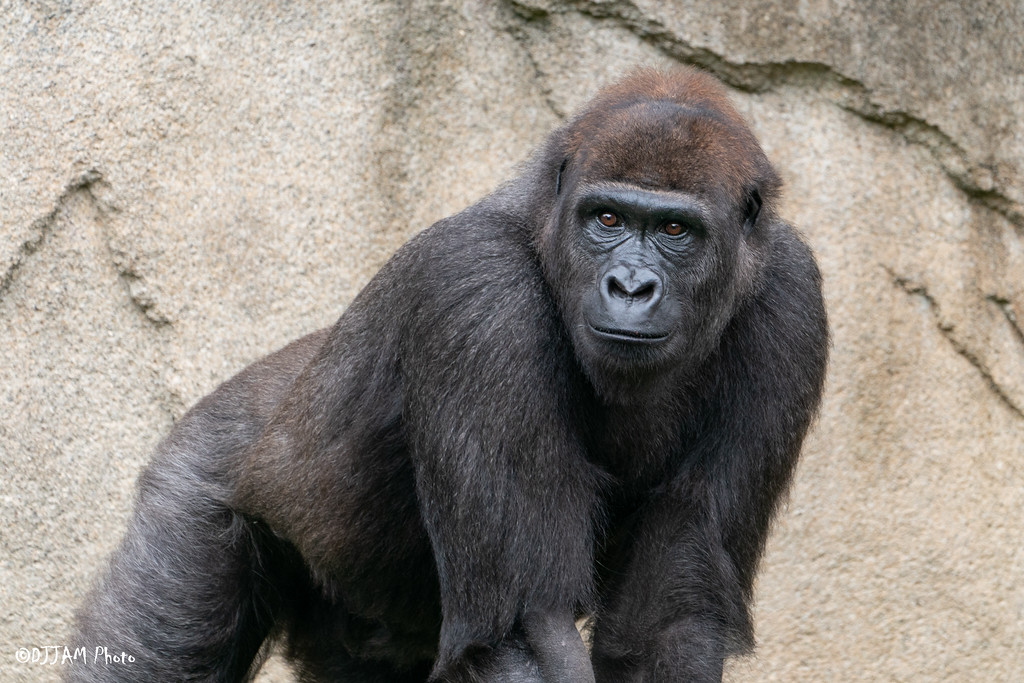Summary of Cincinnati Zoo Vets Work with Cincinnati Children’s, UC Health, and GE Additive to Help Injured Gorilla:
GE Additive is collaborating to produce a specialized titanium 3D-printed cast for Gladys, aiming to provide more durability than traditional casts to safeguard her arm during recovery. Dr. Kevin Little and Dr. Jaime Denning, orthopedic surgeons involved in the procedure, highlighted the challenges of treating a gorilla-like Gladys due to their muscular build, dense bones, and natural hanging behavior from their arms. The surgical team, including Zoo veterinarians and human surgeons, remains optimistic about Gladys’ recovery following the successful placement of screws and plates in her elbow. Dr. Meera Kotagal emphasized the pride of leveraging Cincinnati Children’s pediatric trauma expertise to aid Gladys, underscoring the ongoing collaboration between Cincinnati Children’s Hospital and the Cincinnati Zoo. Gladys is under close observation, with her care team ensuring she receives nutrition, hydration, and pain management. GE Additive’s rapid response to designing and producing the titanium cast in less than a week was praised, underscoring the effective collaboration between medical and engineering realms to ensure optimal care for Gladys. Updates on Gladys’ condition will be provided as she is fitted with her new cast and continues her recovery.
– Collaborative efforts between Cincinnati Zoo vets, Cincinnati Children’s, UC Health, and GE Additive for the welfare of an injured gorilla named Gladys.
– GE Additive made an innovative use of 3D printing technology to create a custom titanium cast for Gladys.
– The challenges and solutions in the cross-disciplinary approach to veterinary and human medical care.
– The role of zoos in wildlife conservation and the significance of such medical interventions.
– Insights into the recovery process and the impact of advanced medical technologies on veterinary care.
—
In a groundbreaking intersection of veterinary science and human medical innovation, the Cincinnati Zoo has partnered with Cincinnati Children’s, UC Health, and GE Additive to treat an injured gorilla named Gladys. This collaboration highlights the depth of care that modern zoos provide for their inhabitants and how technology, such as 3D printing, is revolutionizing veterinary practices.
Gladys, a beloved gorilla, sustained a severe arm injury that caught the attention of the veterinary team at Cincinnati Zoo and medical experts from Cincinnati’s renowned children’s hospital. Given the fracture’s complexity, akin to those often seen in children but complicated by the gorilla’s muscular build and dense bones, a custom solution was imperative. Enter GE Additive, tasked with creating a durable, titanium cast using 3D printing technology. This choice of material and manufacturing process offered durability far surpassing that of traditional casts, a critical factor in preventing further injury during Gladys’ recovery.
Dr. Kevin Little and Dr. Jaime Denning, orthopedic surgeons from Cincinnati Children’s, remarked on the operation’s unique challenges, from Gladys’ muscle mass and bone density to ensuring a gorilla understands and complies with post-surgical care. Their expertise in pediatric orthopedics provided a solid foundation for addressing Gladys’ needs, underscoring the adaptability of human medical practices to veterinary applications.
This endeavor exemplifies the collaborative spirit between zoo veterinarians and human medical professionals. Dr. Meera Kotagal, Director of Trauma Services at Cincinnati Children’s, praised the partnership as a testament to the ongoing relationship between the institutions. Their combined efforts signify a leap forward in blending conservation efforts with cutting-edge medical treatment.
The recovery process for Gladys includes close monitoring by her care team, ensuring she receives the necessary nutrients, hydration, and pain management. The effort extends to maintaining her comfort and preventing damage to the temporary cast before the custom titanium one is fitted. This stage of care is critical, showcasing the zoo’s commitment to the well-being of its residents and the intricate details involved in veterinary treatment.
The rapid design and production of the titanium cast by GE Additive underscore the potential of 3D printing in veterinary medicine. Within less than a week, GE Additive could model, print, and post-process the custom cast, offering a glimpse into the future of personalized veterinary care. This technology provides solutions tailored to the specific needs of zoo animals and enhances the possibilities for wildlife conservation efforts, offering new ways to treat and rehabilitate injured animals.
This case is a prime example of how zoos serve as modern arks for conservation, going beyond the mere exhibition to actively participate in preserving and caring for species. Through such interdisciplinary efforts, zoos can extend their impact from education and recreation to direct contributions to animal health and welfare.
As Gladys continues her recovery, the Cincinnati Zoo will keep the public updated on her progress, further demonstrating the transparency and commitment of modern zoos to animal care. Such stories enrich the public’s understanding of zoos’ role in conservation and the advanced medical techniques employed in wildlife care.
The collaboration between Cincinnati Zoo vets, Cincinnati Children’s, UC Health, and GE Additive for the care of Gladys, the gorilla represents a remarkable fusion of veterinary science, human medicine, and technology. As veterinary practices embrace innovative solutions like 3D printing, the future of animal care and conservation looks increasingly promising, with zoos at the forefront of these efforts.


